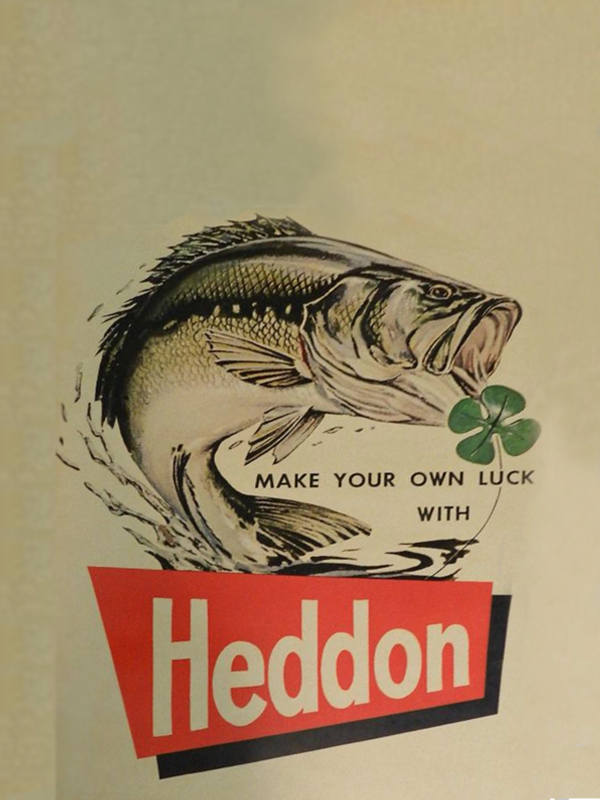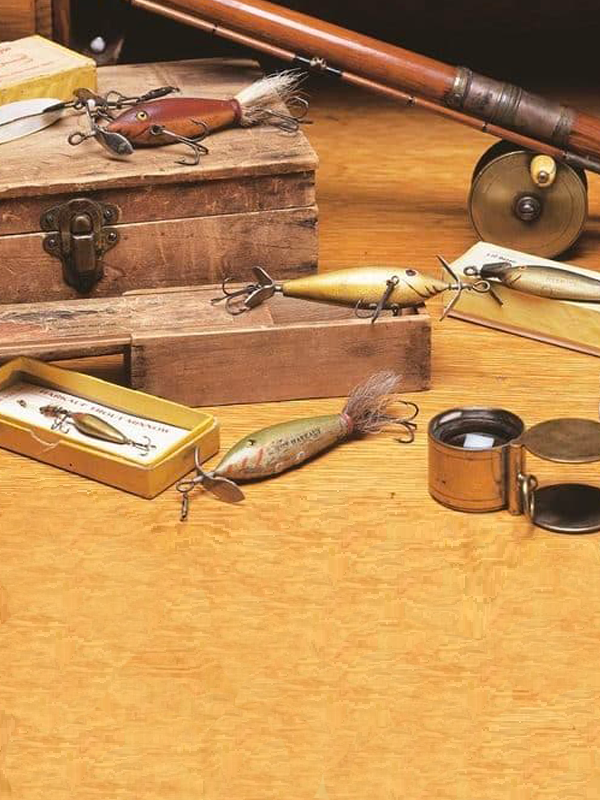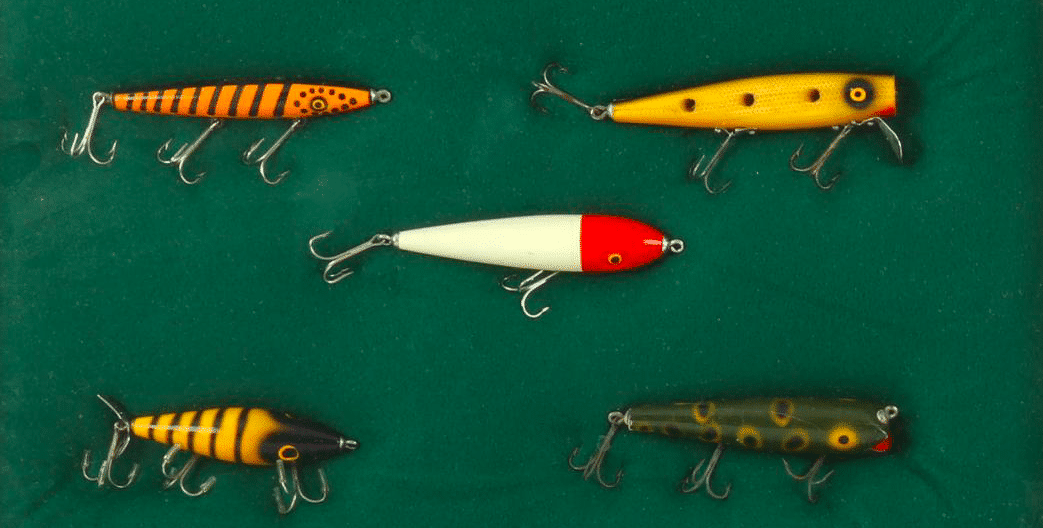
Everything you need to know about lure fishing
Everything you need to know about lure fishing

If today the Inuits of Alaska as well as certain peoples of Papua or Oceania still use bone, walrus ivory or mother-of-pearl shell lures to deceive fish, very similar to those found in prehistoric caves and dating back at least 30,000 years, it was not until the 17th century that the first recreational fishing lures appeared, and no longer only for food.
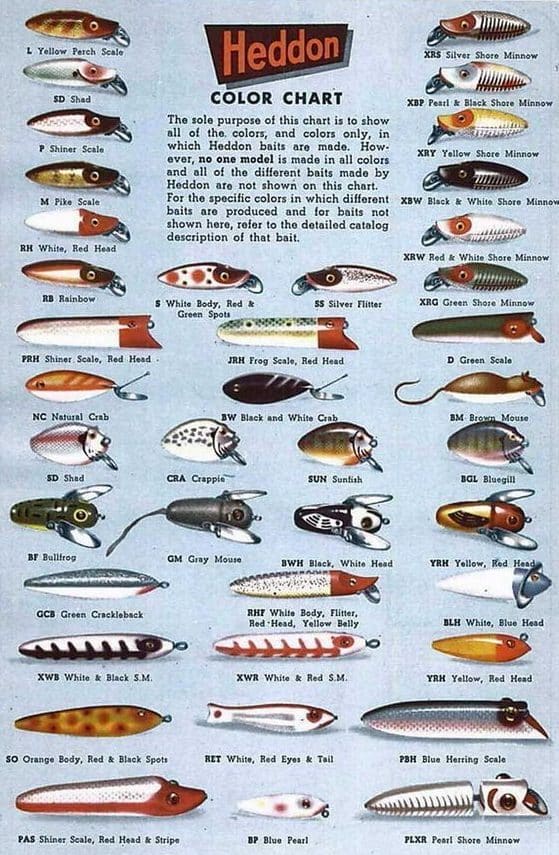
Founded in 1898 in Michigan, the Heddon firm still makes quality lures in 2023.
Just like the fly, lures are the future of fishing. Even if carpomania and surf-casting with natural baits continue to make some resistance, there is no doubt at the beginning of this third millennium that recreational fishing, if it wants to continue to develop, will be sporty, fun, clean, ecological and respectful of the fish.
Sporting, because which young or less young person would like to recognize himself in the image of the fishermen of the Seine of Daumier, bourgeois sitting on a folding chair and waiting with a patience bordering on the absurd that their red cork shakes then sinks?
Playful, and that is the luck of the lure manufacturers, because when it does not bite, one can always have fun swimming, diving, surfing, popping or simply walking like a dog on a leash, a lure whose penetration in the air has been studied in a wind tunnel and whose swimming has been assisted by computer in laminar and turbulent fluid regimes and that Luke Skywalker would not disdain to hang at the end of his “hyper telescopic laser rod” in a future episode of “Star Wars”.
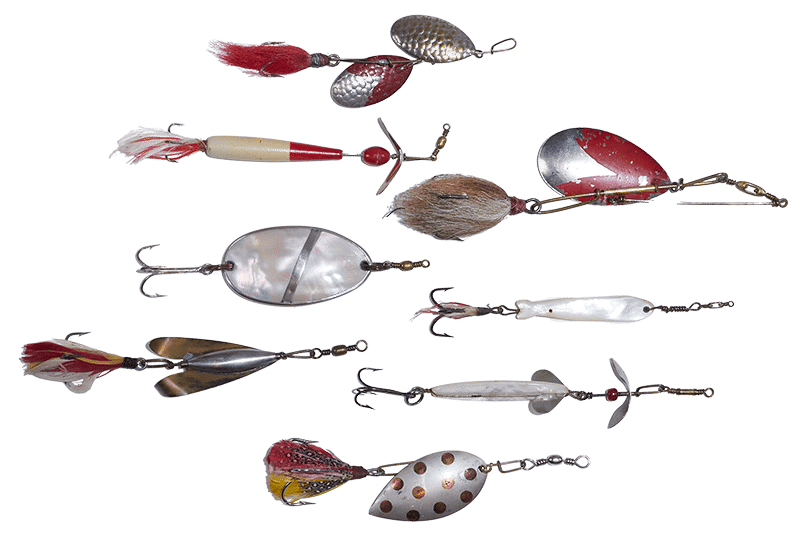
Metal lures with rotating blades called spoons, all decorated with "pompoms" made of ibis or guinea fowl feathers, or even of dyed or undyed hair. The two mother-of-pearl spoons, in the center of the picture, are undulating models, whose brilliance imitates perfectly the reflections of the scales of many small fish (roach, bleak, etc.), prey of predators.
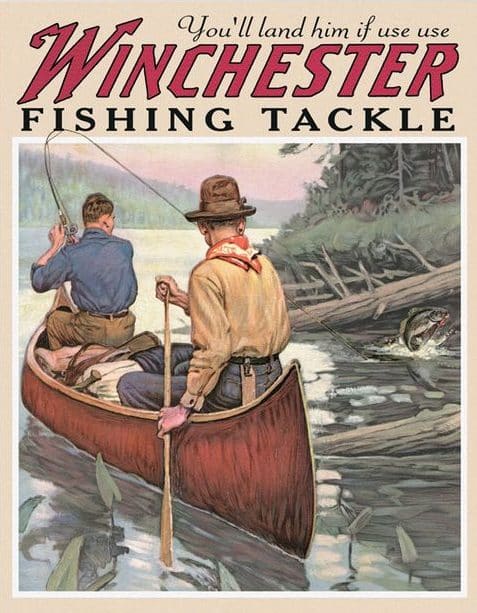
More known for its repeating rifles and other shotguns, the Winchester firm still manufactures excellent lures for freshwater predators: pikes, pike-perches, black-bass, but also for the sea: bass, barracudas, bonito, etc...
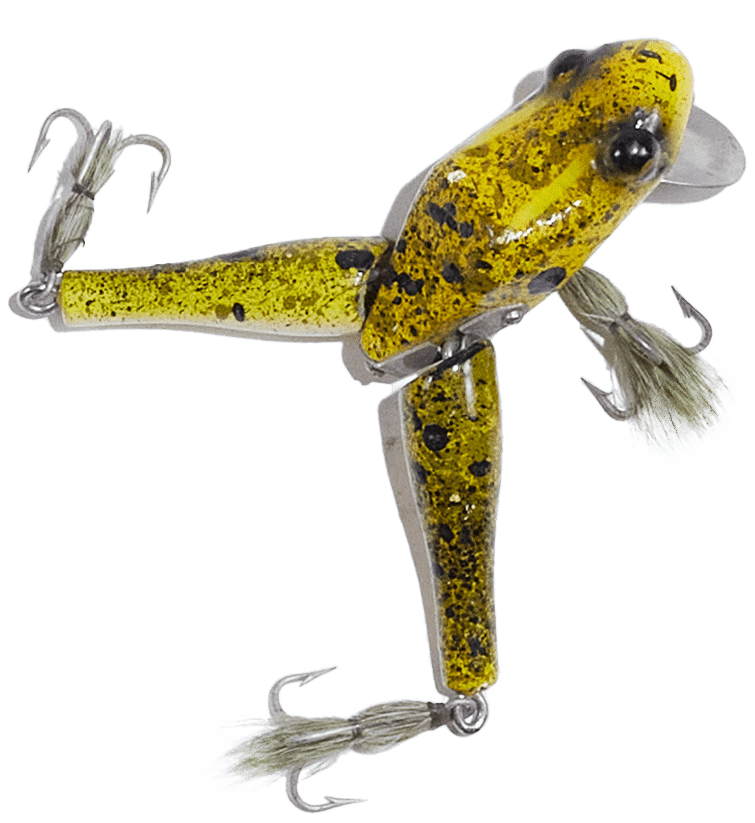
The Paw Paw brand (pronounced Poh Poh) and its famous wooden frog, with articulated hind legs and glass eyes.
Clean, because young fishermen and women, of whom we learn that more and more want to practice our hobby, are reluctant to knead balls of bait, thread wriggling worms or stinking maggots on a hook to catch fish dripping with slime like bream, tench or roach. Fortunately, to catch noble or sport fish species, salmonids, carnivores or large marine predators, lures work wonders.
Ecological and politically correct, fishing with lures allows to put back in the water in good conditions of survival, what should no longer be considered as preys but as partners in the game. Moreover, it does not offer arguments to the “Green” fundamentalists to ban our hobby under the pretext, as in the fishing with livebait or maggot, that we inflict sadistic sufferings to a living being by impaling them on the hook.
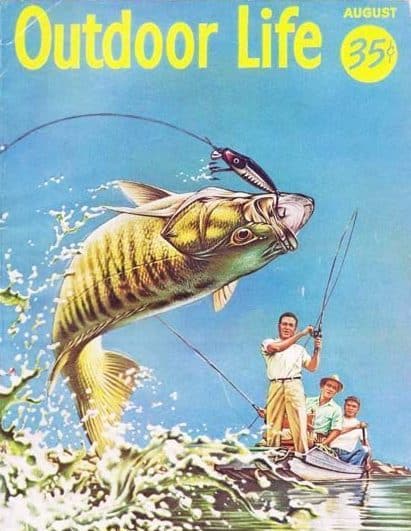
On the front page of "Outdoor Life" magazine, a Black Bass, a carnivorous fish sought after by millions of American fishermen, has bitten on a "plug" (wooden lure) and is trying to get rid of it, in an aerial caper, of which this species has the secret.

Splendid spinner "Pflueger" with triple dressed with feathers of guinea fowl, ibis and swan.
Respectful of the fish, finally, because the fishing lures which contrary to natural baits are never swallowed deeply, and are always pricked in the insensitive hard parts of the mouth of the carnivorous or salmonid fishes, can be with a little know-how, even by using barbless hooks, be easily unhooked and hurt very little the fishes which one wishes to release.
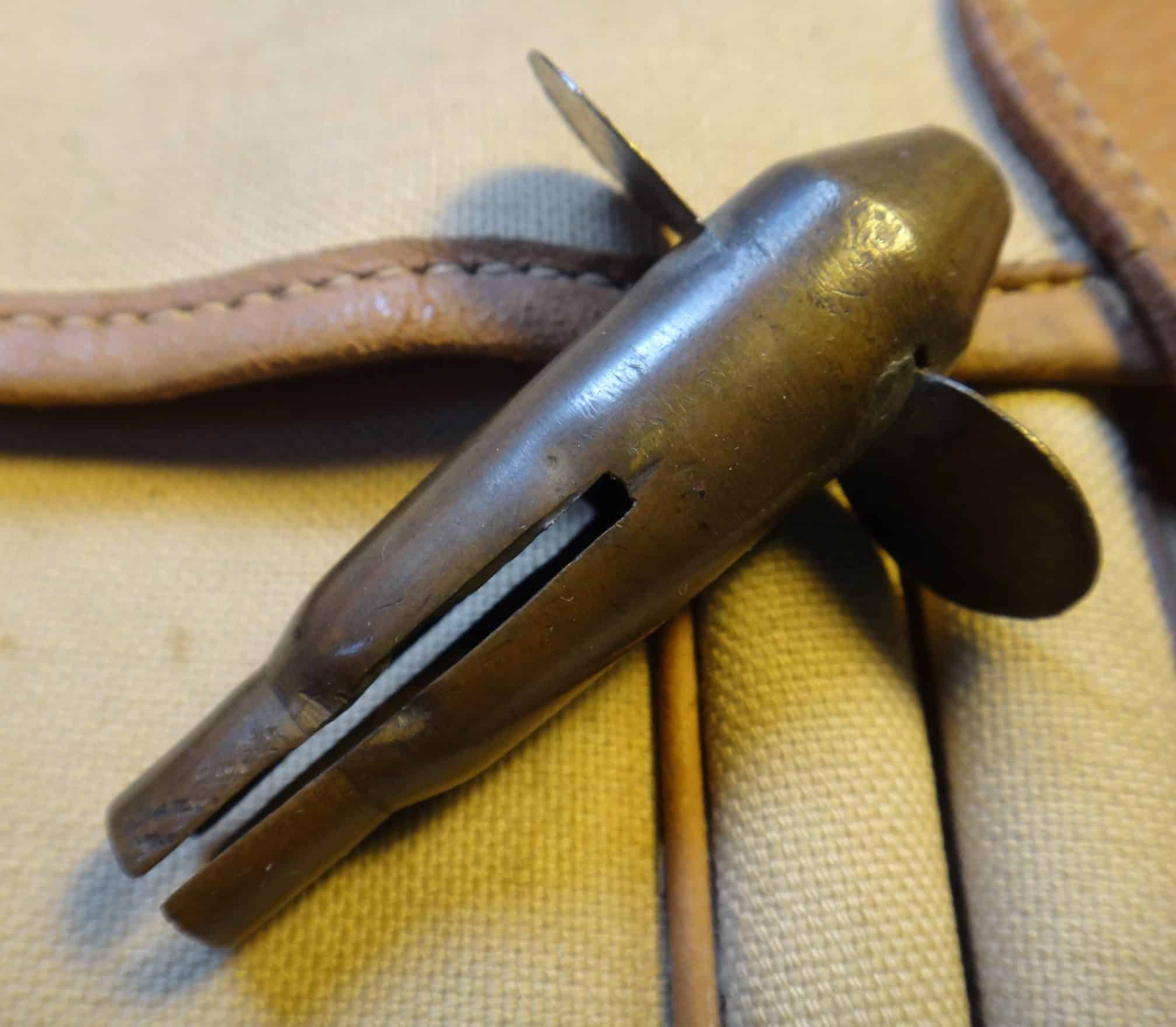
A rare French handmade devon, called "devon des tranchées" (trench devon), because it was made, during their rare moments of inactivity, by poilus (fishermen in peace time), from a Lebel rifle bullet casing, on which two rotating fins were welded. The slot allowed the passage of triple hooks. We know more the shell casings of 75, worked in vase or in cache-pot.
A little history.
If the Cro-Magnon men used lures made of wood, bone or ivory to attract carnivorous fish within reach of their arrow or harpoon point, it was not until the beginning of the 19th century that the first lures for sport or recreational fishing appeared. A universal lure if ever there was one, the metal spoon, or at least its use for fishing, comes to us from England.
The story goes that the wife of a lord who was accompanying her husband on the boat while he was fishing in one of the lakes of his domain, inadvertently dropped a silver picnic spoon overboard, and seeing it spinning and sinking to the bottom, a pike seized it… In France, this method of fishing is mentioned for the first time by Charles de Massas in his famous book: “Le pêcheur à la mouche artificielle et à toutes lignes” published in 1859 in Paris. “We had just had lunch and the Norman gloria was blazing in our cups. You see this small spoon, said my friend while presenting me the one he had just used to stir his coffee. Well! with it I will make you catch perches and pikes. Only it will be necessary to remove its handle and to drill two holes, one at the top, the other at the bottom, at its two ends. I had never heard of such an instrument, and incredulity even more than astonishment was painted on my face. I am not joking,” said my friend, “and to convince you of this, here is a spoon that has been sent to me from England, a country where this kind of fishing is practiced everywhere. My friend mounted his reel line and fitted the leader that carried the spoon. Thanks to its shape and the resistance it offered to the water, the little spoon turned with extreme speed, even in dead water. After a few strokes thrown mostly to wet the line, he went on and caught eleven poles, plus a three-pound pike.“
For a century and a half, millions and millions of spinners and wobblers have been used to catch millions more trout, perch and pike in all the waters of the world. And the success of this lure, which may seem very rudimentary today, has never wavered.

Splendid Polynesian trolling lure, the first known examples of which were brought back from their expeditions in the Pacific by members of Captain Cook's crew. The blade is made of mother-of-pearl and the hook is made of carved bone, sometimes human.
The fishing marketing, declines over and over again the most delirious models of lures.
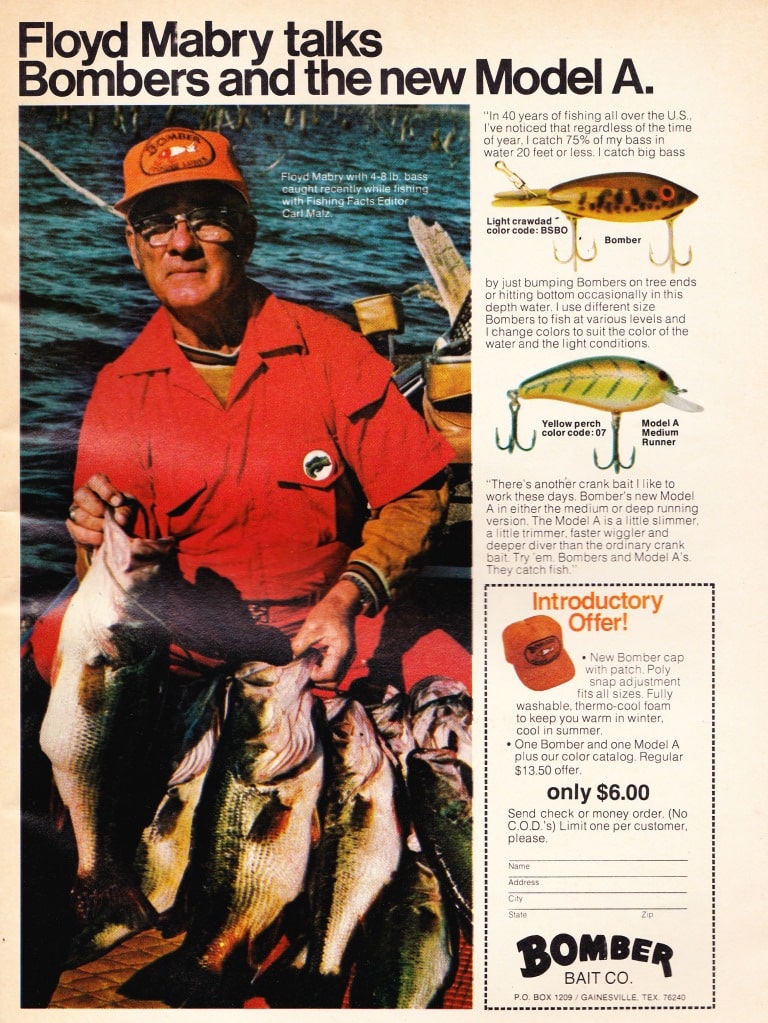
An American competition fisherman with a nice bunch of big black bass, caught with Bombers lures. Today, the fish would be photographed and released.
Even if the “good old” metal spoons, a cheap lure if ever there was one, continue to catch carnivorous fish such as salmonids, modern fishermen have been ingenious for more than a hundred years in inventing other fish catchers of all shapes, sizes, colors, materials and behavior at the end of the line. The devons, wooden fishes, artificial rubber fishes, tin fishes of our grandfathers have now been replaced by plugs, jigs, poppers, Rapalas and other spinner baits, crank baits, stick baits, creek chubs, magnets, top water plugs, suspenders, bombers, pin’s, bugs, mega tropic, without forgetting the jigs and other soft lures and if my keyboard could write Japanese, I don’t know which samurai would find there his panoply of Yo-Zuri, Asaki, kariba, kirara, Kokun, Shogun, hamakuku, kouroucoucou, and so on…
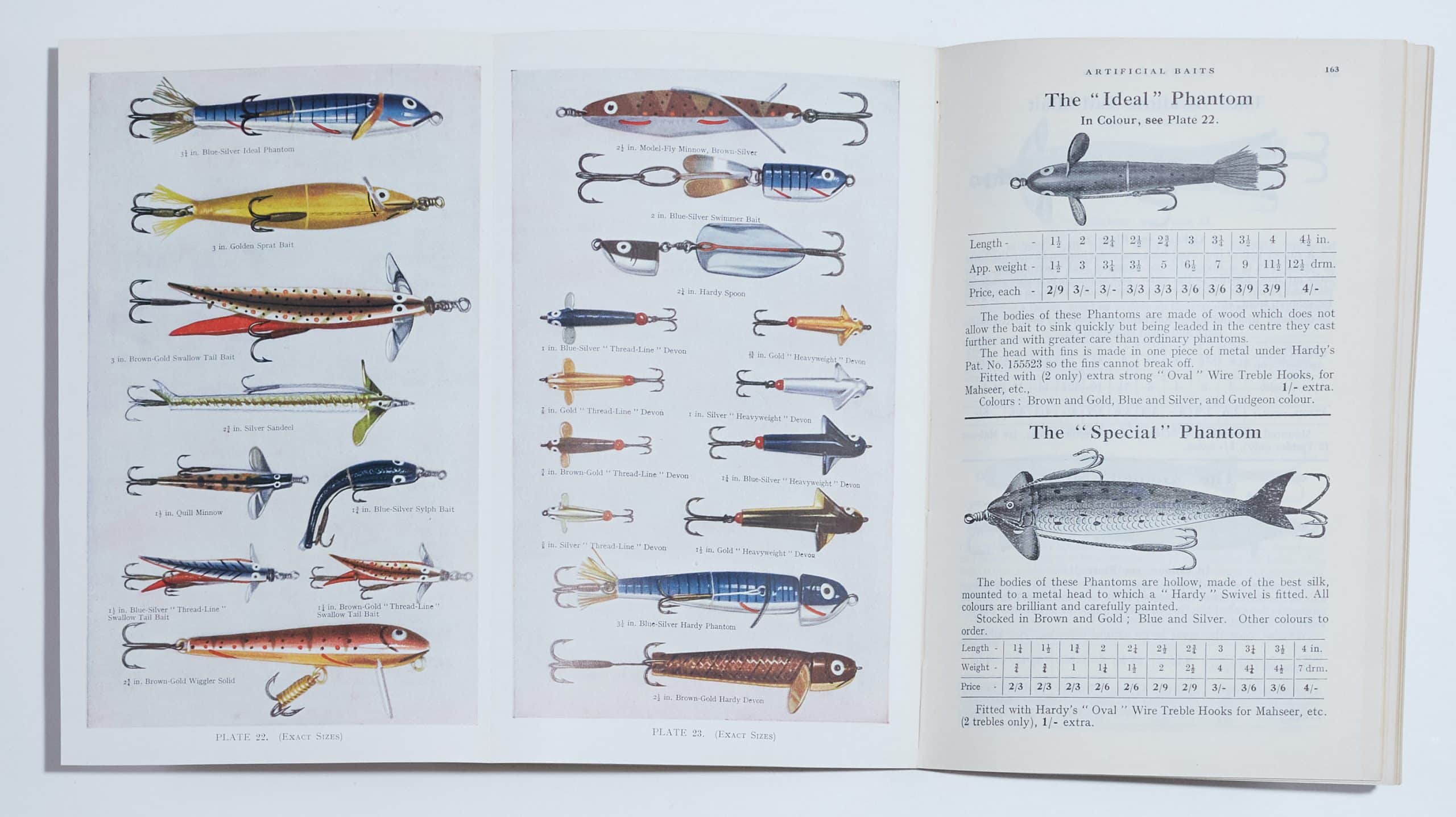
Very nice folding color plate, taken from a Hardy catalog of the thirties, showing the wide variety of lures of the brand. Numerous models of wooden, metal or rubber "devons", a swimming fish with a bib (bottom left, ancestor of the Rapala) and a spinning spoon with a lead sinker.
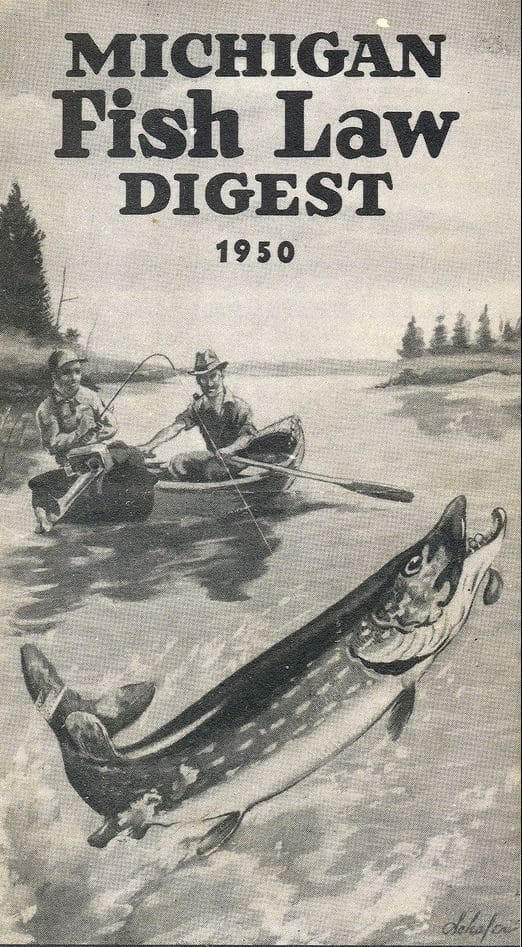
In the United States, the conservation and protection of fish resources is a priority in all states of the Union. Here is a small booklet issued with the 1950 fishing license, summarizing the legal catch sizes, the number of fish allowed per day, the fishing methods and other rules not to be violated, under penalty of a fine, or even a ban on fishing for the next few years.
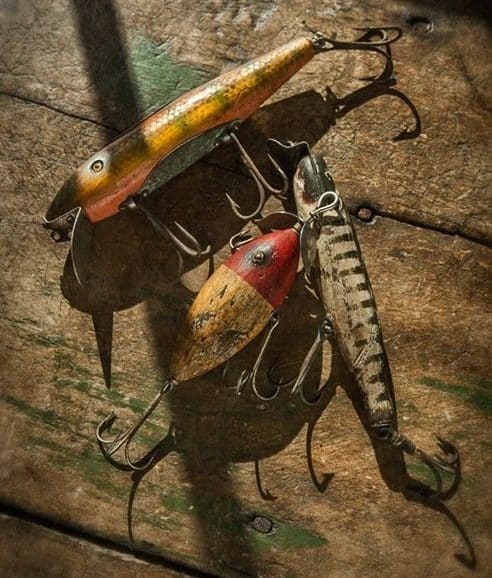
Pre-war wooden lures that can still catch fish today.
And it is, moreover, as with car models or single malts from the Highlands, this diversity declined to the extreme and renewed like haute-couture collections twice a season, which makes the lure manufacturers the only economic actors in the “Fishing” sector to still rub their hands… Because even if in the free and public waters of our country, yet managed, if we believe our fisheries authorities, “in the most democratic and best way in the world”, the failures are not counted, French fishermen continue to buy lures that they often go to swim in Irish, Dutch, Scottish, Spanish, Austrian, Polish, Russian waters, when it is not in New Zealand, Kamchatka or Alaska … All countries that are not lucky enough to have fishing federations as (in)competent as ours.
Did you know that?
France is, after the United States and Japan, the third largest importer-consumer of fishing lures. Between freshwater and sea, there are about one million lure fishermen in our country.
The Mepps company, the first world manufacturer of spoons was created before the war, and despite an Anglo-Saxon sounding name, was, even if it was recently, given the success of its productions, bought by American capital, all that is more French. It is a car engineer and fisherman, André Meulnart, who created this brand in 1937. Today, not one French fisherman out of a hundred thousand who uses these spoons knows that MEPPS stands for Manufacture d’Engins de Précision pour la Pêche Sportive.
Along with Mepps spoons, the most famous lures in the world are certainly the Rapalas, originally manufactured in Finland and whose brand name, like frigidaire, has become a synonym for lure.
In the United States, it is estimated that there are more than 30 million lure fishermen, and that the turnover generated by this “industry” is more than 50 billion dollars…..
In freshwater, the most sought-after fish in the world by lure anglers is by far the black bass. In France, trout is certainly the most popular fish, followed by pike, perch and zander.
In salt water, on our coasts it is the bass or Mediterranean wolfish which is the most sought after species by recreational fishermen.
Larger marine fish such as tuna or marlin can be fished with lures.


